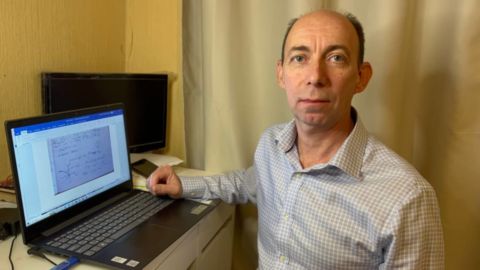Yuan or dollar, euro or rouble? A new computer development by the School of Electronic Engineering and Computer Science of South Ural State University will help you find the optimal answer, and get maximum profit with minimal risks, taking into account the exchange rate forecast and expert assessments. The work was carried out within the framework of the Science and Universities national project.
Associate Professor at the SUSU Department of Mathematical Support of Information Technologies Konstantin Kudriavtsev and his graduate student Pavel Simakov obtained copyrights to develop their own software packages capable of ranking foreign currency deposits and making weekly adjustments to shares.
The scientific field, which their discovery relates to, is called decision-making theory. Konstantin Kudriavtsev is also known as a specialist in fuzzy calculations and game theory.
In the language of mathematics the scientists’ discovery means that they modified the classic stochastic optimization algorithm EDA, which works with Pareto-optimal values, adding fuzzy set theory methods to it.
This led to the creation of two useful programs, experimental versions of which have already been tested in practice.
The first program is the ranking of foreign currency deposits. Suppose a client has a certain amount that he wants to store in different banks and in different currencies, following the popular wisdom "don’t put all your eggs in one basket". The client has a long (several tens or hundreds) list of banks and tariffs for deposits in different currencies with different annual percentages. Anyone would feel dizzy and in need of computer help.
You can also select the most tempting, optimal offers using the classic estimation of distribution algorithms (EDAs). But these algorithms are not able to take into account the forecast of exchange rates for the coming period (a year, for example), and without this, bank offers can turn out to be just beautiful promises.
A currency forecast can be built by taking into account data from past years and taking into consideration the opinion of expert economists about what factors and how can influence the exchange rate. There will be many forecasts, and they will form some interval. And the classic algorithm can work with numbers, not intervals.
The theory of fuzzy sets comes to the rescue, in which the analogue of "numbers" are intervals.
Thus, by adding fuzzy calculations to the classical algorithm, it is possible to take into account various forecasts of exchange rates, and a series of expert assessments about the reliability of a particular bank.
SUSU mathematicians Konstantin Kudriavtsev and Pavel Simakov automatically collected and processed deposit offers from dozens of Russian banks, adding currency exchange rate forecasts and expert assessments. The top five depends on the client’s preferences and is not disclosed to avoid advertising, but the scientists testified that the result was somewhat unexpected.
The second program is the adjustment of the exchange portfolio. Say, a speculator invested a certain amount to buy a portfolio of shares of different enterprises. But he does not want to let things take their course for a whole year, but wants to adjust his portfolio weekly, promptly selling unprofitable shares and buying more promising ones for the same amount. As in the first case, the stock price forecast is constructed similarly to the currency rate forecast, and it is also important to take into account expert assessments of reliability.
The SUSU mathematicians tested the algorithm on data from the Moscow Interbank Currency Exchange (MICEX) and compared the result with the classical algorithm that worked with MICEX indicators. The result was in favour of the Chelyabinsk scientists, whose model allows to receive 20% more benefits.
The work of Konstantin Kudriavtsev and Pavel Simakov was supported by a grant from the Russian Science Foundation (RSF).




